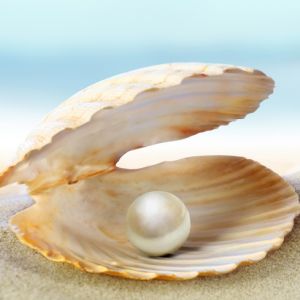Artificial Turf Market Is Booming Insights, Growing Trends And Demands by 2030
Posted by Pearl Smith on June 9th, 2023
The artificial turf market refers to the industry involved in the production, distribution, and installation of synthetic or artificial turf surfaces. Artificial turf, also known as synthetic grass or fake grass, is a surface made from synthetic fibers that imitate the appearance and characteristics of natural grass. It is primarily used as a replacement for natural grass in sports fields, residential lawns, commercial landscapes, and other applications.
Here are some key points about artificial turf:
Construction: Artificial turf typically consists of a backing material, synthetic fibers, and infill. The backing material provides stability and drainage, while the synthetic fibers create the grass-like appearance. Infill, usually made of materials like rubber or sand, is used to support the fibers, provide cushioning, and improve playability.
Advantages:
Low maintenance: Artificial turf requires minimal maintenance compared to natural grass. It does not need to be watered, mowed, or fertilized regularly.
Durability: Synthetic turf is designed to withstand heavy use and can endure harsh weather conditions, making it suitable for high-traffic areas.
Consistent appearance: Artificial turf maintains its green color and even texture throughout the year.
Water conservation: Since it does not require watering, artificial turf helps conserve water resources, particularly in regions prone to drought.
Allergy-friendly: For individuals with grass allergies, artificial turf can provide relief as it does not produce pollen.
Here is some detailed information about the artificial turf market:
Growth and Market Size:
The artificial turf market has been experiencing significant growth in recent years due to various factors such as increasing demand for low-maintenance and aesthetically appealing landscapes, rising awareness about environmental benefits, and growing applications in sports.
The market is projected to expand at a compound annual growth rate (CAGR) of around 6.8% from 2021 to 2028.
Applications:
• Sports Fields: Artificial turf is widely used in sports fields, including soccer, football, rugby, tennis, and golf. It offers enhanced durability, consistent playing surfaces, reduced maintenance costs, and extended usability compared to natural grass.
• Residential Lawns and Landscapes: Homeowners and commercial property owners are increasingly adopting artificial turf for landscaping purposes. It provides an evergreen appearance, requires minimal maintenance, conserves water, and eliminates the need for pesticides and fertilizers.
• Playgrounds and Recreational Areas: Artificial turf is popular in playgrounds and recreational areas due to its soft and safe playing surface, which helps reduce injuries. It offers better cushioning and impact absorption compared to traditional hard surfaces.
• Commercial and Industrial Landscapes: Artificial turf is used in commercial settings such as office complexes, hotels, retail spaces, and industrial areas to create attractive and low-maintenance landscapes.
Product Types:
• Polyethylene (PE) Turf: PE turf is the most common type of artificial turf and is known for its soft texture and natural appearance. It is widely used in residential lawns and landscaping applications.
• Polypropylene (PP) Turf: PP turf is more economical compared to PE turf and is often used in low-traffic areas or for decorative purposes.
• Nylon Turf: Nylon turf is the most durable type of artificial turf and is primarily used in high-traffic sports fields and commercial applications.
Regional Market:
North America: The North American artificial turf market is one of the largest globally, driven by the extensive use of artificial turf in sports fields and residential landscapes.
Europe: Europe is a mature market for artificial turf, with a high adoption rate in various sports, including soccer and rugby.
Asia Pacific: The Asia Pacific region is witnessing significant growth in the artificial turf market, fueled by increased sports activities and infrastructural development.
Latin America: Countries in Latin America, particularly Brazil and Argentina, are witnessing a surge in the adoption of artificial turf for sports fields and residential landscapes.
Middle East and Africa: The Middle East and Africa region is experiencing rapid growth in the artificial turf market due to the development of sports infrastructure and urban landscapes.
Key Market Players:
Tarkett Group
Shaw Sports Turf
TenCate Grass
FieldTurf
SIS Pitches
Act Global
Limonta Sport
Edel Grass
SportGroup
ForestGrass
Factors Affecting the Market:
• Growing awareness about the environmental benefits of artificial turf, including water conservation and reduced pesticide usage.
• Increasing investments in sports infrastructure and the rising popularity of sports activities.
• Advancements in artificial turf technology, leading to improved durability, shock absorption, and natural aesthetics.
• Government regulations and initiatives promoting the adoption of artificial turf in public spaces and sports facilities.
• Fluctuations in raw material prices, such as polymers and additives, which can impact the overall cost of artificial turf.
It's important to note that the artificial turf market is subject to evolving trends and factors specific to each region. The information provided here is a general overview and may not capture all the nuances of the market.



